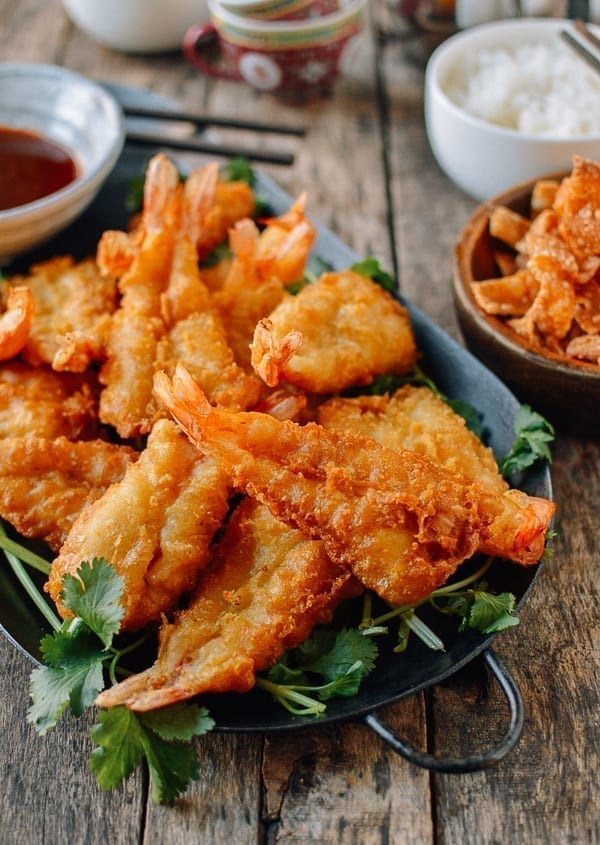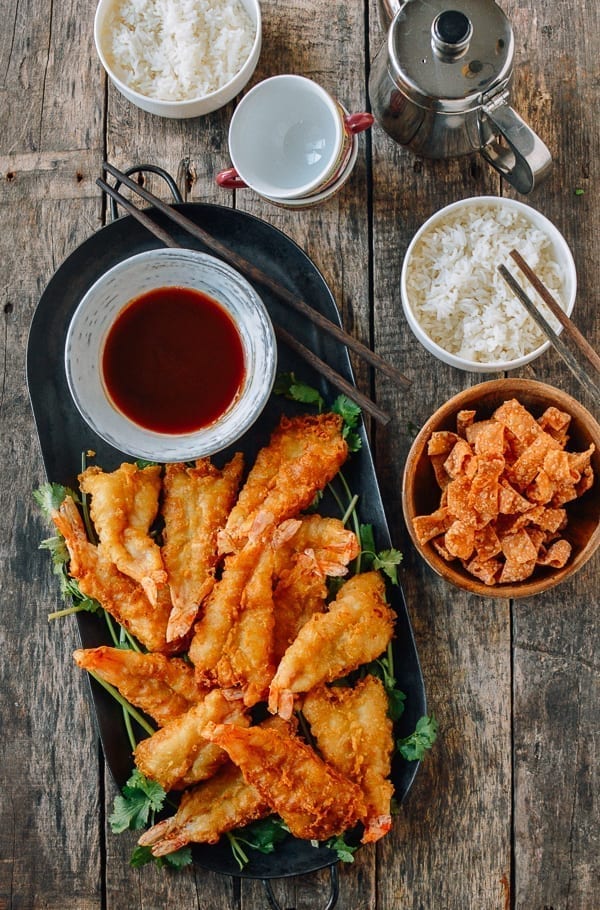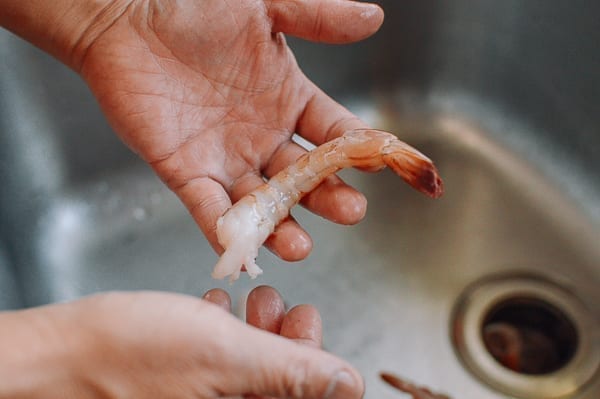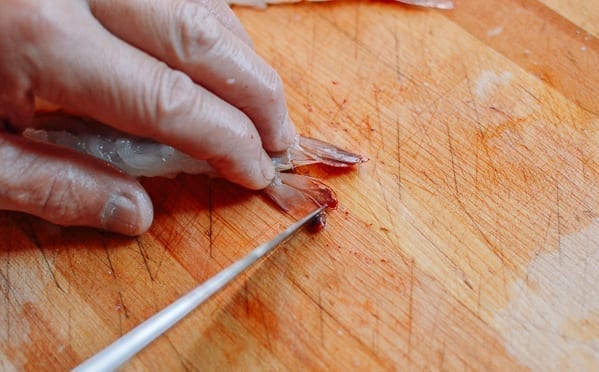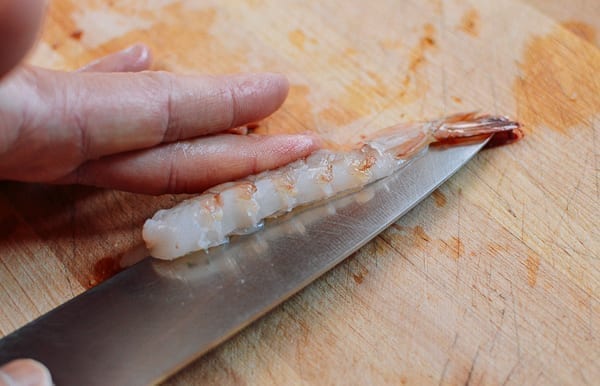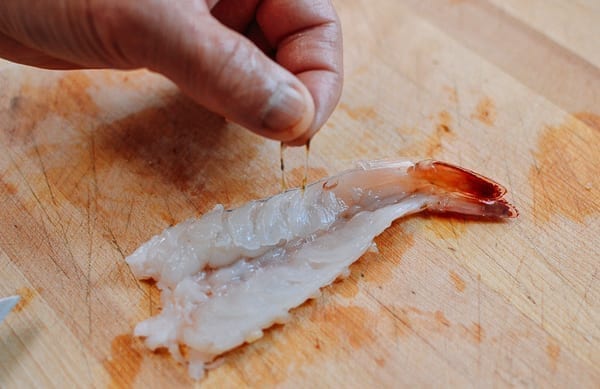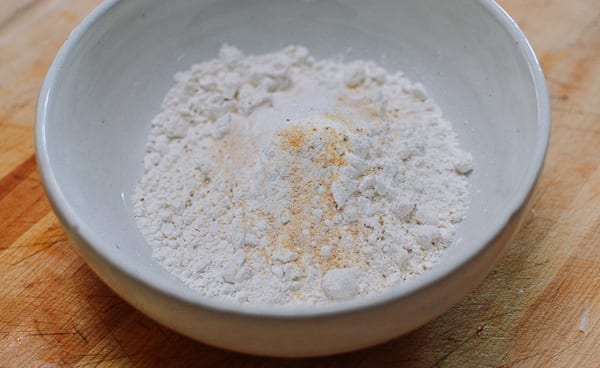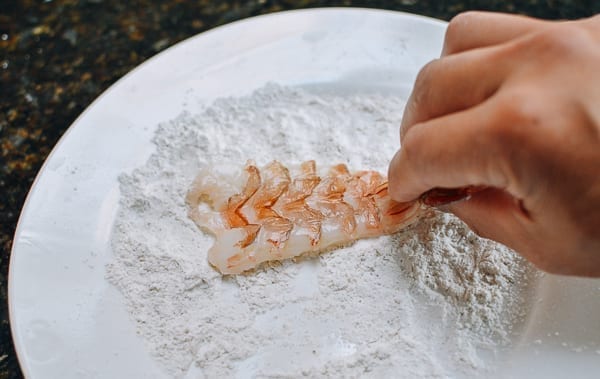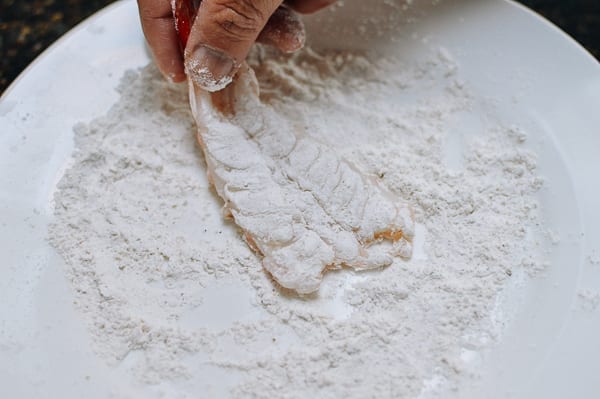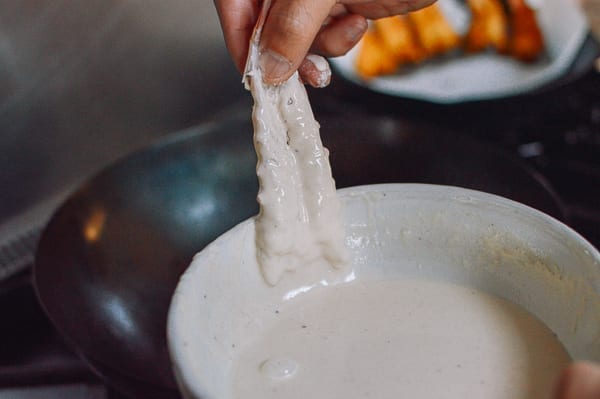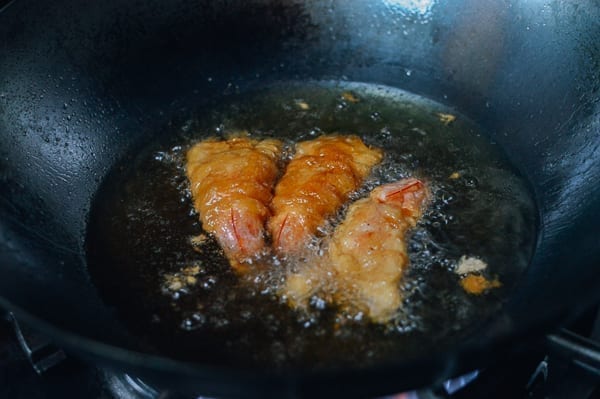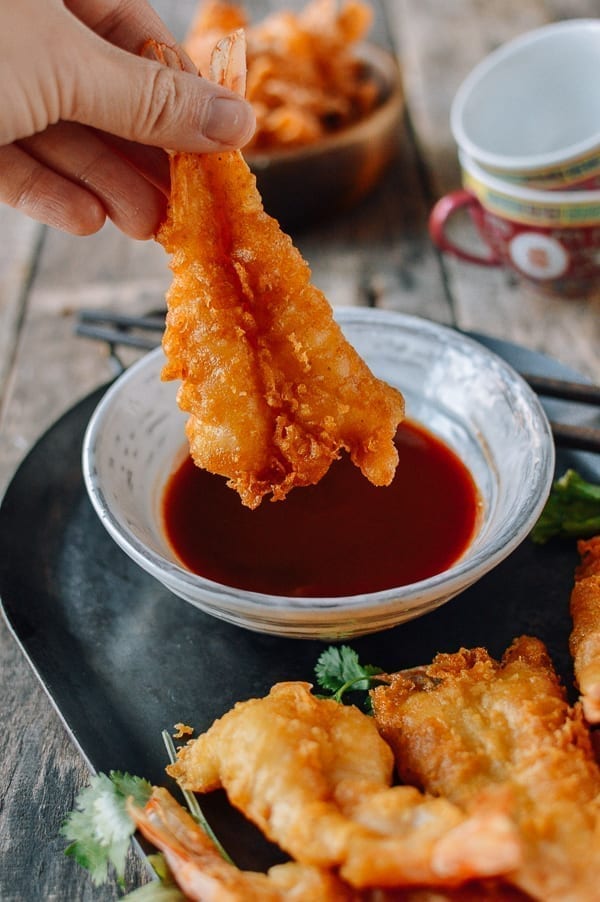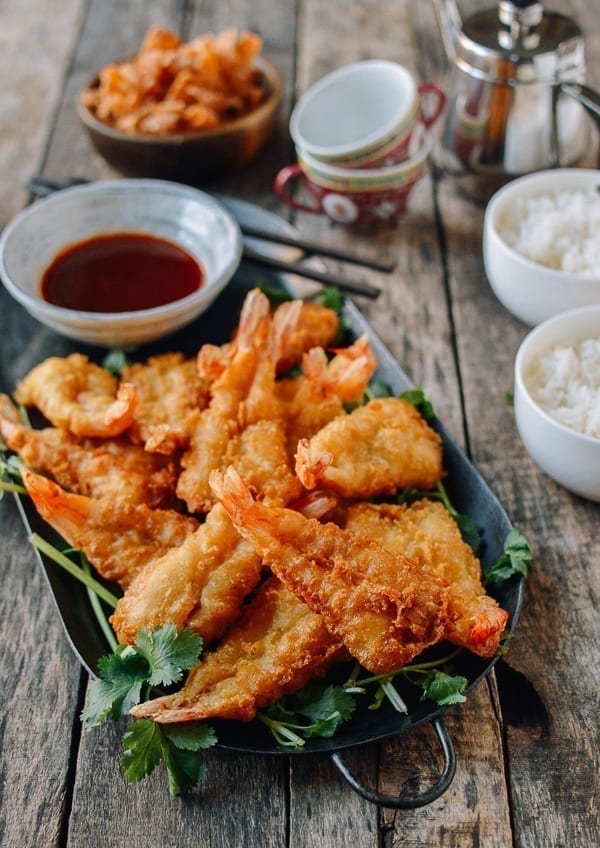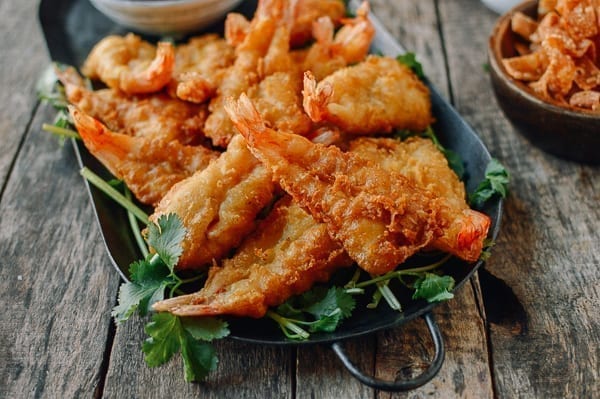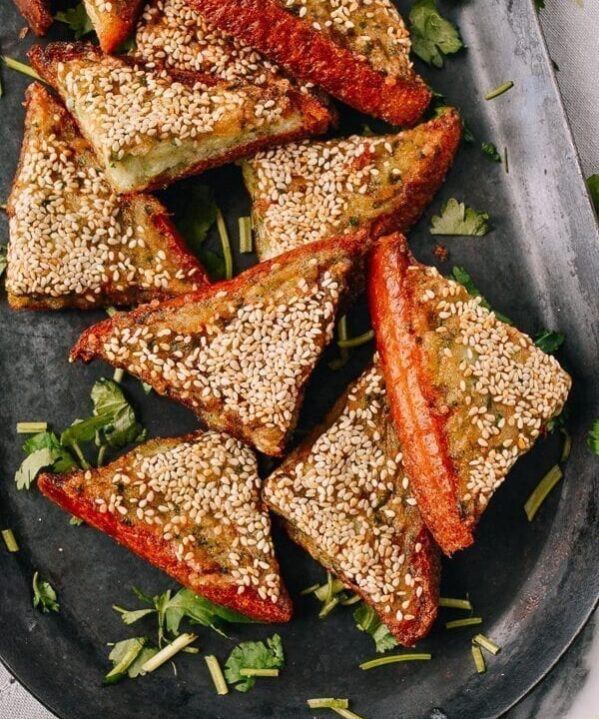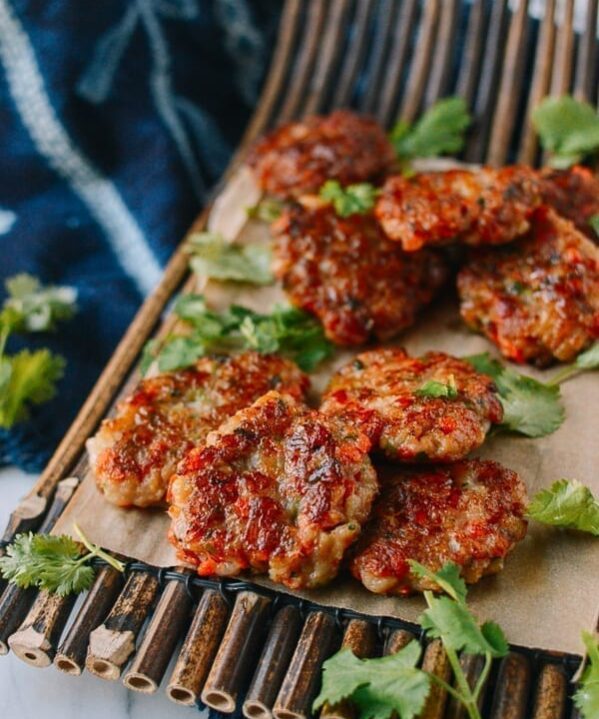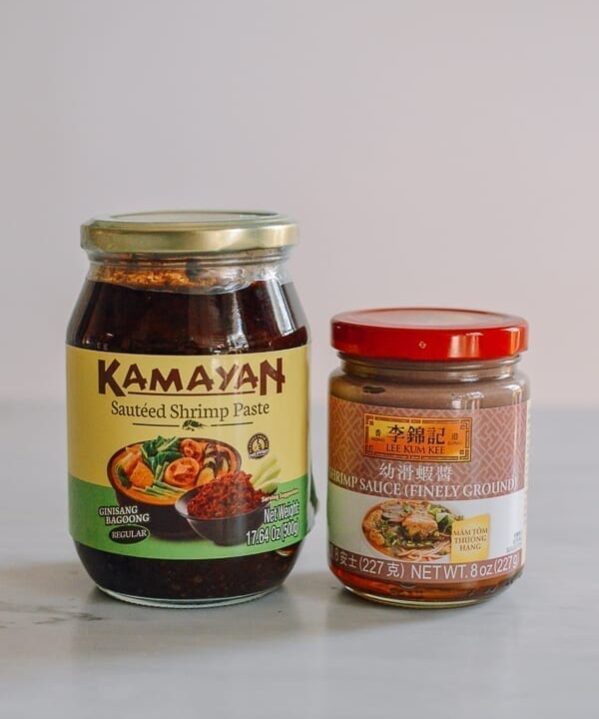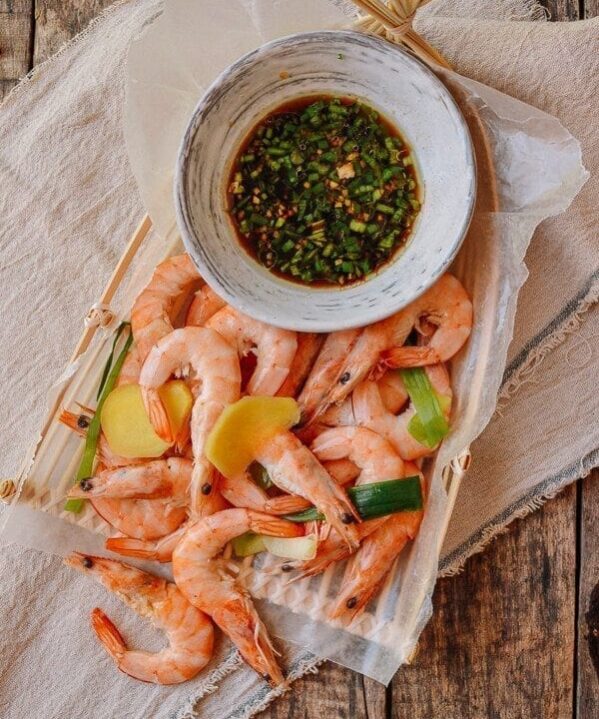Fantail shrimp is one of those retro dishes offered in every Chinese restaurant years ago. I even remember my father ordering fantail shrimp for us kids in the Cantonese restaurants we ate at in Chinatown.
Like this timeless fantail shrimp recipe, the shrimp were large, and the batter was light! You may find, however, that at some takeout restaurants, this dish is heavy on the batter/breading and light on the shrimp! All the more reason to prepare this throwback dish at home.
What is fantail shrimp?
Fantail shrimp is dish of large butterflied shrimp, batter fried and served with a tangy sauce on the side. I mean, you can’t go wrong with batter fried shrimp! Fantail shrimp are beautiful, impressive, and quite delicious.
What is a Pu Pu platter?
I first encountered these fantail shrimp on a Pu Pu platter when I worked as a busboy. Pu Pu platters were a favorite appetizer combo plate, complete with a flaming mini grill and most commonly found in Polynesian Chinese restaurants.
Depending on where you lived, Pu Pu platters could have had pork char siu slices, Chinese ribs, egg rolls, chicken wings, shrimp toast, and yes, fantail shrimp. I always thought fantail shrimp were one of the best things on the Pu Pu platter.
How are shrimp sized?
Fantail shrimp is best when made with large shrimp, and we call for size 15 or larger. So what is this number as it relates to shrimp size?
The number is actually called the “count,” and it is the number of shrimp in one pound. You can also use 16-20 size shrimp for this recipe, since they are more readily available.
Look for shrimp from sustainable sources! Anytime you’re buying seafood, check out resources like Monterey Bay Aquarium’s Seafood Watch or the Marine Stewardship Council for the best choices.
Fantail Shrimp Recipe Instructions
How to Butterfly the Shrimp:
The shrimp should be headless with the shells on, but make sure they are not deveined with the backs cut open. In order to butterfly the shrimp, the back of the shrimp should be intact. It will hold both sides of the butterflied shrimp together. You’ll also keep the shrimp tails in place for the final dish.
Peel the shrimp, only leaving the small segment of shell that connects to the tail. If you like, you can scrape the tails to remove the liquid inside the tails, since we are deep-frying the shrimp. (I learned this from a sushi chef while watching him prepare shrimp for shrimp tempura.)
Place the shrimp on its side with its underbelly facing you. Holding the shrimp with one hand, use the tip of your knife to split the tail shell.
Next, use a steady, yet light pressure to push the knife into the shrimp, splitting it evenly down the middle until it just reaches the outer membrane. Be sure to remove any sand tracts and give the shrimp a quick rinse if needed.
Pat the shrimp dry on both sides and use ¼ teaspoon of salt to lightly salt them (or salt to taste).
Making Batter for Fantail Shrimp:
Mix 3/4 cup all purpose flour and the rest of the dry ingredients together in a bowl.
Add ice water and vegetable oil. Mix until a batter is formed, and set aside for 5 minutes.
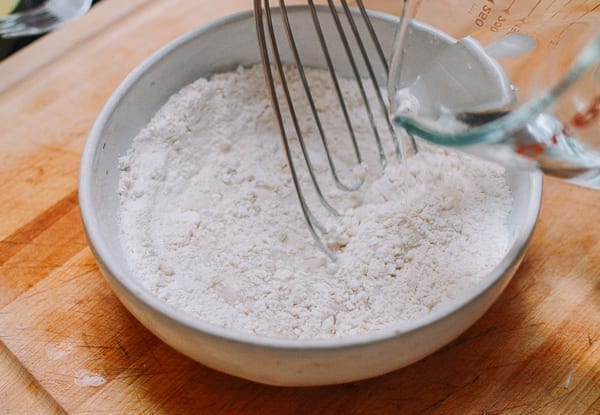
Making the Fantail Shrimp Sauce:
In a small saucepan over medium heat, add 1 teaspoon oil and add the ketchup. Fry for 30 seconds on low heat until it just begins to caramelize, and stir in white vinegar, soy sauce, sesame oil, white pepper, and the cornstarch mixture.
Continue to stir the sauce until it is simmering. Once it is thick enough to coat a spoon, remove to a serving bowl and set aside.
Frying the Shrimp:
Heat 3-4 cups of oil in a small pot to 325 degrees F (the oil level should be about halfway up the pot).
Place ¼ cup of all-purpose flour on a small plate, and lightly dredge the shrimp, shaking off any excess.
Dip the shrimp into the batter, and let any excess batter drip off. You can use your own discretion here on how much batter to use. Some like a light batter and some like it heavier.
Carefully place the shrimp into the hot oil. Let the shrimp fry on one side and after 1 minute, turn the shrimp over. Once the shrimp is golden brown on all sides, transfer to a plate lined with paper towel to drain.
Serve with fantail shrimp sauce, duck sauce, or rice wine vinegar on the side.
And perhaps some steamed rice and a cold beer!
Fantail shrimp are best when eaten hot, but you can make your shrimp ahead of time. You can even freeze these fantail shrimp for up to 2 weeks. When you’re ready to serve, simply refry them in oil, reheat in an air fryer, or heat in the oven at 400 degrees F until warmed through.
Fantail Shrimp
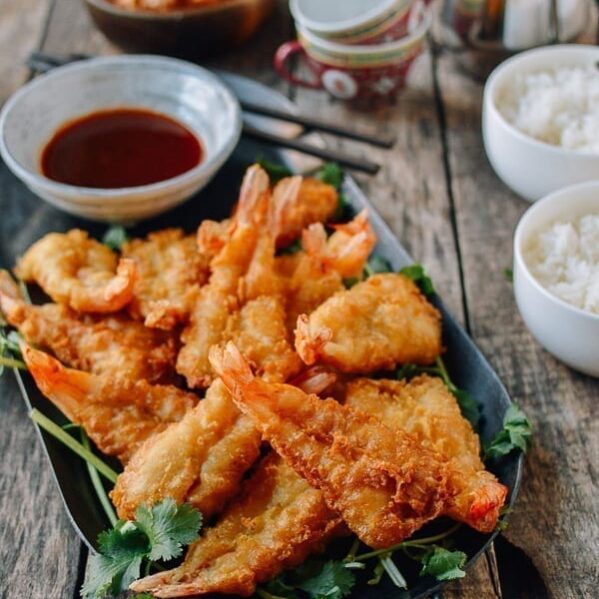
Ingredients
You'll need:
- 1 pound fresh shrimp (headless, unpeeled, 15 size)
- 1/4 teaspoon salt
- 3-4 cups vegetable oil (or canola oil, for frying)
For the batter:
- 3/4 cup all purpose flour (plus 1/4 cup, divided)
- 1 tablespoon cornstarch
- 3/4 teaspoon baking powder
- 3/4 teaspoon baking soda
- 1/8 teaspoon white pepper
- 1/4 teaspoon onion powder
- 1/8 teaspoon garlic powder
- 1 tablespoon vegetable oil (or canola oil)
- 2/3 cup ice water
For the sauce:
- 1 teaspoon vegetable oil (or canola oil)
- 2 tablespoons tomato ketchup
- 2 tablespoons white vinegar
- 1 teaspoon soy sauce
- 1/8 teaspoon sesame oil
- 1/8 teaspoon white pepper
- 1 teaspoon cornstarch (mixed with 1/3 cup water)
Instructions
How to Butterfly the Shrimp:
- The shrimp should be headless with the shells on, but make sure they are not deveined with the backs cut open. In order to butterfly the shrimp, the back of the shrimp should be intact. It will hold both sides of the butterflied shrimp together. You’ll also keep the shrimp tails in place for the final dish.
- Peel the shrimp, only leaving the small segment of shell that connects to the tail. If you like, you can scrape the tails to remove the liquid inside the tails, since we are deep-frying the shrimp.
- Place the shrimp on its side with its underbelly facing you. Holding the shrimp with one hand, use the tip of your knife to split the tail shell.
- Next, use a steady, yet light pressure to push the knife into the shrimp, splitting it evenly down the middle until it just reaches the outer membrane. Be sure to remove any sand tracts and give the shrimp a quick rinse if needed.
- Pat the shrimp dry on both sides and use ¼ teaspoon of salt to lightly salt them (or salt to taste).
Making the batter:
- Mix 3/4 cup all purpose flour and the rest of the dry ingredients together in a bowl. Add ice water and vegetable oil. Mix until a batter is formed, and set aside for 5 minutes.
Making the sauce:
- In a small saucepan over medium heat, add 1 teaspoon oil and add the ketchup. Fry for 30 seconds on low heat until it just begins to caramelize, and stir in white vinegar, soy sauce, sesame oil, white pepper, and the cornstarch mixture.
- Continue to stir the sauce until it is simmering. Once it is thick enough to coat a spoon, remove to a serving bowl and set aside.
Frying:
- Heat 3-4 cups of oil in a small pot to 325 degrees F (the oil level should be about halfway up the pot).
- Place ¼ cup of all-purpose flour on a small plate, and lightly dredge the shrimp, shaking off any excess. Dip the shrimp into the batter, and let any excess batter drip off. You can use your own discretion here on how much batter to use. Some like a light batter and some like it heavier.
- Carefully place the shrimp into the hot oil. Let the shrimp fry on one side and after 1 minute, turn the shrimp over. Once the shrimp is golden brown on all sides, transfer to a plate lined with paper towel to drain. Serve!
